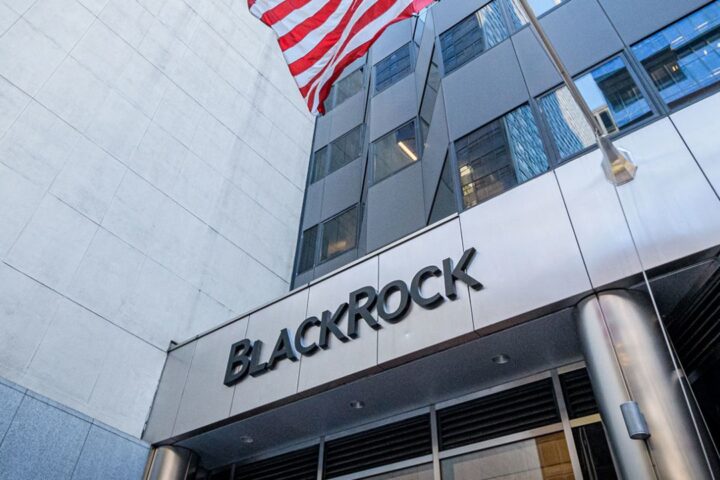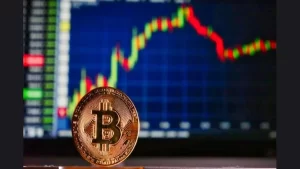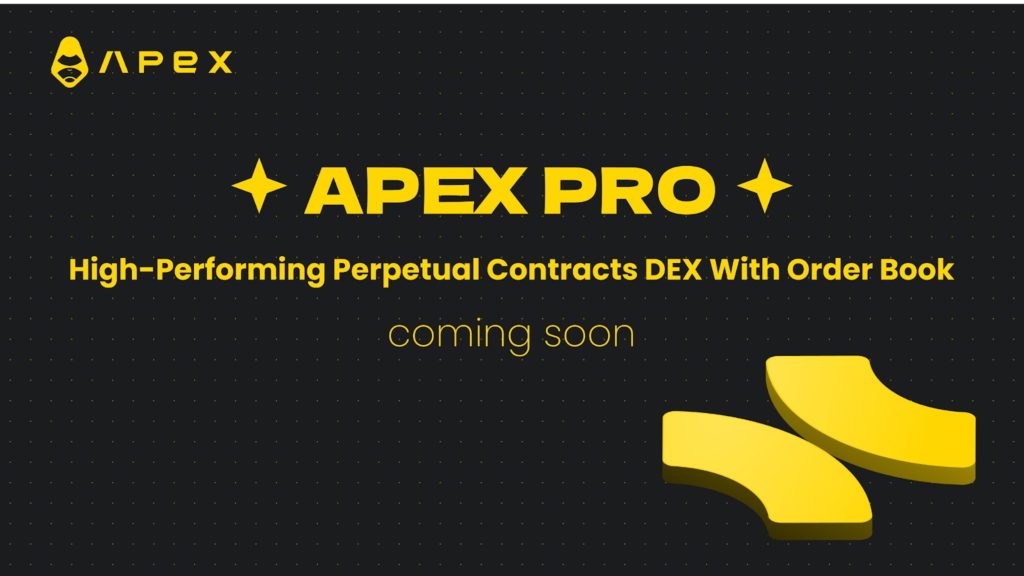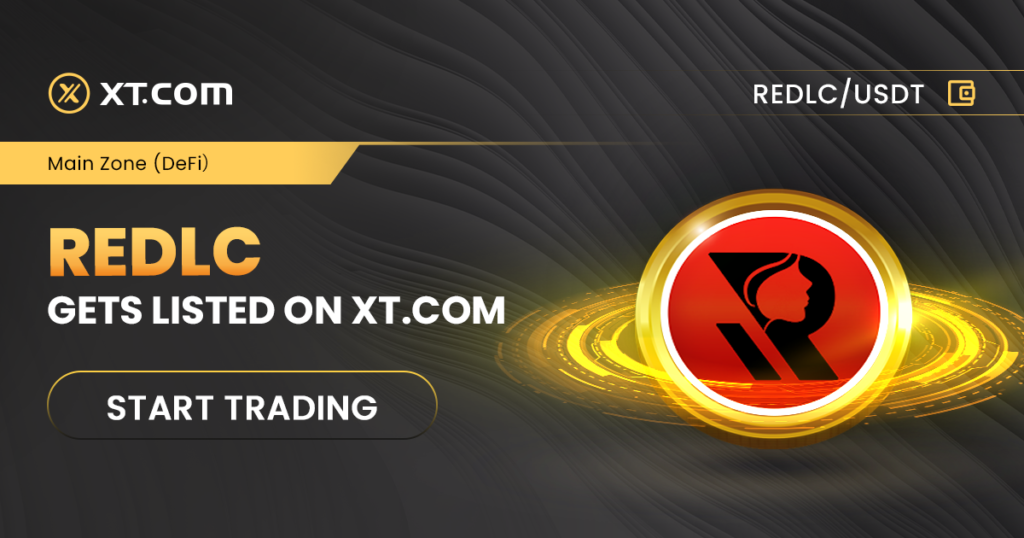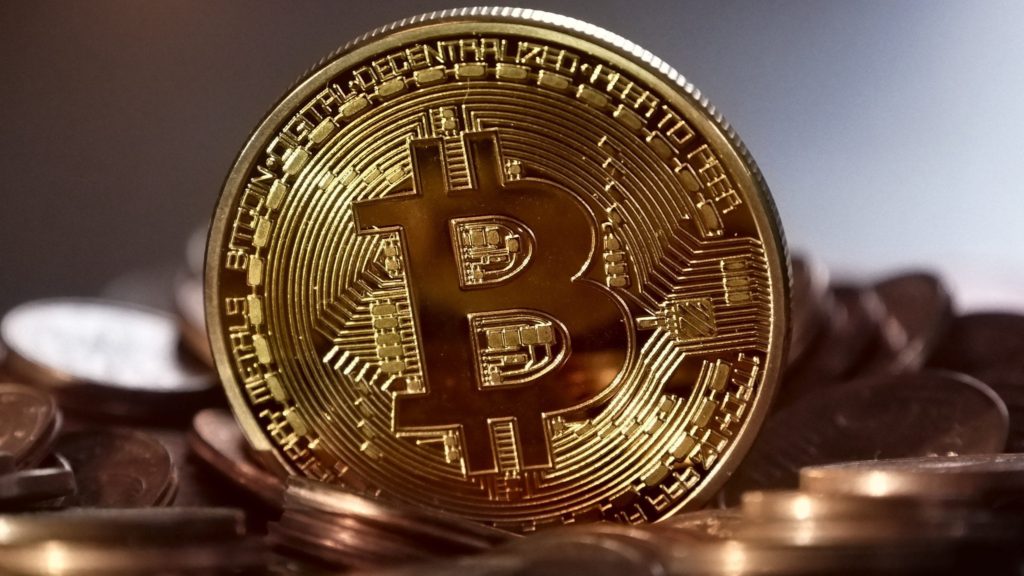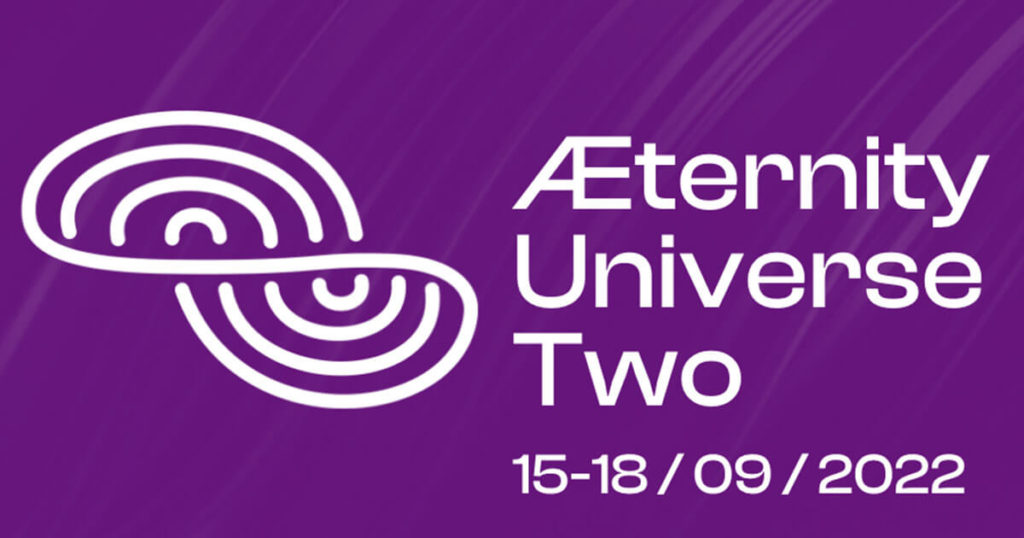Saint Vincent and the Grenadines, Aug 21, 2022 — ApeX Protocol, a decentralized, permissionless and non-custodial network, first opened the gateways of inclusive access to the crypto perpetual swaps market in February 2022.
Designed to provide solutions to flaws in existing decentralized exchanges (DEXs) such as high gas fees and poor order execution, the ApeX Protocol is firmly anchored in realizing the Web3 vision — shaping a free and open ecosystem for all users to grow their wealth in a safe and trusted environment, where they can participate within an interconnected meta-community.
ApeX Pro, a layer-2 (L2) trading platform built on the ApeX Protocol, has integrated zero-knowledge Rollup (zk-Rollup) infrastructure, bringing an upgrade that will help establish a Web3 social trading platform. ApeX Pro is leveraging first on the rollout of a new order book feature to co-exist with the current elastic automated market maker (eAMM) model.
From ApeX eAMM to ApeX Pro
The ApeX Protocol ecosystem has grown significantly since its inception on the Arbitrum chain in the first quarter of 2022. The benefits of the eAMM model, where trading pairs are set up with a single asset provision and orders are automatically executed based on smart contracts, have been extensively proven in a decentralized environment.
Similarly, the ApeX Protocol has succeeded in upholding a fully permissionless platform with no need for Know Your Customer restrictions or intermediaries in trades. Traders can also enjoy full spectrum asset support and liquidity in perpetuity on the perpetual swaps markets for any token pair.
ApeX Protocol is committed to further bridging the gap between derivatives traders and Web3 innovations with upcoming upgrades. An integrated and open social trading platform marks its next stop, beginning with an optimized order book offering on the brand new ApeX Pro.
A synchronized solution with StarkEx
ApeX Pro will offer its flagship cross-margined perpetual swaps trading platform to users with an upgrade by integrating the best of order book architecture on top of the protocol’s existing framework.
The addition of the order book interface helps to:
- Enhance capital efficiency for users who intend to invest or trade with fewer funds but are still looking for high liquidity provisions.
- Increase flexibility in orders with advanced charting functions, plus visible asks and bids that will help users take more informed trading actions.
- Accelerate the growth of the ApeX meta-community, as the order book interface bridges the gap between users who are used to utilizing order books for trades and a new realm of trading opportunities offered by the world of decentralized finance (DeFi).
- Provide higher trading performance with enhanced market exposure, with leverage and other trading features.
- Support multichain deposits and withdrawals for Ethereum Virtual Machine-compatible chains.
With the help of StarkWare’s L2 scalability engine (StarkEx), ApeX Pro is able to uphold the promise of decentralized and efficient trading by offering users an optimal combination of security and transparency one would usually see in a DEX and the speed and usability users are used to seeing on centralized exchanges.
Leveraging StarkEx’s use of cryptographic proofs in validating transactions and also Validium to boost transaction scalability, ApeX Pro is poised to provide faster transaction processing speeds and some of the lowest gas fees across the DeFi sphere. Engineered for higher liquidity and greater network interoperability, users can access non-custodial trading with Ether (ETH) and any ERC-20 tokens.
What lies ahead
In a rapidly morphing crypto landscape where milestone innovations frequently come into play, ApeX Protocol is charting the course for decentralization to match the needs of individual users — all by kickstarting a new era of Web3 social trading.
Combined with powerful matching engine capabilities, ApeX Pro aims to help traders tokenize data income and realize influence.
Over the coming months, ApeX Pro will launch greater feature and service add-ons so users can be a part of ApeX Protocol’s ecosystem:
- Creation of decentralized identifications: Get access to a customizable, personal trading dashboard.
- New tokens and perks: Soulbound tokens and participation rewards will be made available to users who engage in the ApeX Protocol ecosystem.
- The ApeX decentralized autonomous organization: ApeX is working toward building a DEX infrastructure, where ownership of the platform is eventually conferred upon its users.
The roadmap is designed to be accessible by open markets, as ApeX Pro continues to foster community-led development and establish sustainable growth practices that can support the protocol in perpetuity.
About ApeX Pro
- Website: https://app.apex.exchange/trade
- Twitter: https://twitter.com/OfficialApeXdex
- Telegram: https://t.me/ApeXdex
Singapore, Aug. 21, 2022 — XT.com, the world’s first social infused digital asset trading platform, is delighted to announce that it will soon list the Redlight Finance (REDLC) coin on Aug. 20, 2022, at 1 pm UTC. REDLC and Tether (USDT) is the available trading pair that will be onboarded under the exchange’s main zone, or metaverse.
REDLC is the blockchain governance coin of the Redlight Finance ecosystem. It functions as the platform’s primary medium of exchange for all transactions. Redlight Finance aims to solve blockchain scalability, security and decentralization challenges through its optimized gasless blockchain. Without the involvement of a third party, Redlight Finance’s main objective is to showcase how REDLC can serve as the true bridge from the decentralized finance (DeFi) world to the real world without any hassle.
XT.com encourages crypto enthusiasts and REDLC coin holders to proceed with depositing crypto assets on Aug. 19, 2022, at 1 pm UTC. Furthermore, everyone can participate in and capitalize on REDLC by trading it. XT.com will offer REDLC-USDT withdrawal options specifically on Aug. 21, 2022, at 1 UTC.
The XT team highlights that, in line with its continuous coin listing, this forms a huge part of its long-term goal of building an efficient, secure and inclusive virtual asset ecosystem for its users. Investors are welcome to take advantage of the listing to make a liveable income by trading REDLC-USDT when it goes live.
Jonathan Shih, head of Middle East and Africa at XT.com, said, “We are delighted to partner with Redlight Finance and have their coin listed on our platform. By onboarding the REDLC coin for trading, we will further extend our arms and support Redlight Finance to achieve its aims of solving the security, decentralization and scalability trilemma of blockchains by projecting its REDLC utility coin on our exchange for trading.”
About Redlight Finance
Redlight Finance is a layer-1, Ethereum Virtual Machine-compatible blockchain. It aims to solve the main trilemma of blockchain, which includes scalability, decentralization and security. Moreover, one of Redlight Finance’s goals is to provide a sophisticated blockchain bridge to close the gap between the DeFi world and the real world and connect hospitals, financial institutions and other governmental organizations to securely transition into Web3. To achieve this, the company has developed its one-of-a-kind gasless blockchain with an intuitive use case for traditional crypto investors by integrating smart contracts.
Website: https://redlight.finance
Twitter: https://twitter.com/redlight
About XT.com
By consistently expanding its ecosystem, XT.com is dedicated to providing users with the most secure, trusted and hassle-free digital asset trading services. Its exchange is built from a desire to give everyone access to digital assets regardless of location.
Founded in 2018, XT.com now serves more than 4.5 million registered users, over 500,000 monthly active users and 30-plus million users in the ecosystem. Covering a rich variety of trading categories, together with a nonfungible token aggregated marketplace, its platform strives to cater to its large user base by providing a secure, trusted and intuitive trading experience.
As the world’s first social infused digital assets trading platform, XT.com also supports social networking platform-based transactions to make its crypto services more accessible to users all over the world. Furthermore, to ensure optimal data integrity and security, XT.com sees user security as its top priority.
Website: https://www.xt.com
Telegram: https://t.me/XTsupport_EN
Twitter: https://twitter.com/XTexchange
FTX, the crypto exchange controlled by Sam Bankman-Fried, received a cease-and-desist warning on Friday from the Federal Deposit Insurance Corporation, telling the company to stop “misleading” consumers about the insurance status of their funds.
The FDIC issued letters to five crypto companies, including FTX US. Unlike deposits held at U.S. banks, cryptocurrencies stored with brokerages are not protected by the government.
“Based upon evidence collected by the FDIC, each of these companies made false representations —including on their websites and social media accounts — stating or suggesting that certain crypto-related products are FDIC-insured or that stocks held in brokerage accounts are FDIC-insured,” the regulator said in a press release.
In addition to FTX US, the FDIC notified Cryptonews.com, Cryptosec.info, SmartAsset.com and FDICCrypto.com. The FDIC said the companies must “take immediate corrective action to address these false or misleading statements.” The agency said knowingly misrepresenting or implying that an uninsured product is FDIC-insured is prohibited by the Federal Deposit Insurance Act.
In the letter specifically to FTX, the FDIC said it appeared that on July 20, Brett Harrison, the president of FTX.US, published a tweet stating that direct deposits from employers are stored in FDIC-insured accounts in the user’s name.
Harrison tweeted on Friday that he deleted that post and didn’t mean to indicate that crypto assets stored in FTX are insured by the FDIC, but rather “USD deposits from employers were held at insured banks.”
“We really didn’t mean to mislead anyone, and we didn’t suggest that FTX US itself, or that crypto/non-fiat assets, benefit from FDIC insurance,” Harrison wrote.
FTX.US is a U.S. cryptocurrency exchange owned by FTX, which is based in the Bahamas and has been largely focused on building its business outside of the U.S.
The FDIC also said that the websites for SmartAsset and CryptoSec identify FTX as an ”‘FDIC-insured’ cryptocurrency exchange.”
Follow Crypto Intelligence on Google News to never miss a story
Bitcoin slumped about 8% on Friday as markets and investors took in Fed comments that suggested a dovish pivot remained unlikely to happen soon.
The crypto traded at $21,438 Friday at 8:30 a.m. ET, and the decline of $1,751.40 marked its biggest single-day drop in a month, according to CoinDesk data. Friday’s move also continued a five-day decline for the world’s biggest cryptocurrency, which hovered near $25,000 before the sell-off. On the year, bitcoin has dropped over 54%.
Meanwhile, ether dropped nearly 10% over the last 24 hours, trading at $1,690.38. Similar to bitcoin, the token has shed approximately 55% in 2022.
The crypto retreat mirrored an overall risk-off trend, with stocks also selling off, after Fed officials dashed hopes for relief from rate hikes anytime soon.
St. Louis Fed President James Bullard said he’d prefer a 75-basis-point hike next month, which would mark the third straight increase of that size, and said he isn’t ready to say inflation has peaked.
“We should continue to move expeditiously to a level of the policy rate that will put significant downward pressure on inflation,” Bullard told the Wall Street Journal Thursday.
Also on Thursday, San Francisco Fed President Mary Daly told CNN that a September rate hike of 50 or 75 basis points would be “reasonable” and predicted increases will continue into at least 2023, pushing back against calls for a dovish pivot by then.
Meanwhile, the US dollar index notched a fresh one-month high Friday as the central bank signaled its committement to more rate hikes.
As investors pile into the safe haven, the index moved above 107, it’s highest since July 18 and on pace for the largest weekly gain since March 2020.
Follow Crypto Intelligence on Google News to never miss a story
The AIBC Summit has always prided itself on being a global hub for innovation, technological foresight and proactive entrepreneurship.
From combining the leading minds in the Deep Tech space to empowering visionary-led projects in the areas of IoT, blockchain, AI, quantum computing and more, the summit has always served as a nexus of discussion and debate. This year, the inaugural summit in Belgrade will platform some of the leading minds in the space to discuss some of the most exciting topics in deep tech.
Deep tech thought: Top topics at AIBC Belgrade
Spread out over two days, the summit is set to cover a series of the most vital areas of technological innovation in both the digital and physical worlds. Spread over five thematic agendas, AIBC will use Belgrade’s thriving ecosystem of developers and technical innovators to platform pertinent discussions on:
- DeFi and payments
- Web3 and the Metaverse
- Blockchain regulation, crypto Innovation and cybersecurity
- NFTs and crypto trends
- Emerging technologies and the future of AI
DeFi and payments: Tomorrow’s finance
From mass adoption to building in a bear market, this agenda will provide a glimpse into the next generation of payment strategies and microeconomics. With finance being the lifeblood of any industry as well as a pillar for adoption as a whole, discussions on crypto’s place in the global financial ecosystem as well as the presence of new players such as neobanks and DAOs are of vital importance.
Luckily enough, attendees will be guided through this journey by leading figures from ventures such as Brickken, 100xPartners, Unigrid and many more through keynotes and panels illuminating the role of tomorrow’s money.
Web3 and the Metaverse: Bridging the physical and digital
With the Metaverse being one of the hottest topics in the ecosystem, the lattice of interrelated technologies (AR, VR, Web3, blockchain and more) that will serve as the foundation for the next generation of the internet will take center stage at AIBC’s Belgrade show. Leading technologists will be showing lucky delegates how the netizens of the future will be able to interface with cyberspace in new and exciting ways, so anyone with a foot in digital assets will want to stay tuned for this.
From the pioneers and engineers of the Metaverse to entrepreneurs in the Web3 space, our speakers have come from all four corners of the Earth and cyberspace to share their insights with our delegates.
Blockchain regulation, NFTs and the future of DLT
At the forefront of innovation, blockchain and DLT technology as a whole represent a disruptive force in a wide portfolio of industries. From medical technology to data sovereignty, the ongoing wave of mass adoption stands to leave nothing untouched, with regulation and legal reform being one of the main focuses in this year’s Belgrade summit.
Covering issues such as the legal potential of DAOs to investment in digital assets, our handpicked selection of industry leaders will drive the debate on the future of blockchain forward. From Metaverse architects to leading DLT lawyers, the Belgrade Summit will bridge today’s bear market with tomorrow’s bull run.
Emerging technology and the future of AI:
With the Fourth Industrial Revolution under way, the role of deep tech has never been more fundamental in the future of society. From the incoming AI revolution to the disruptive arms race between quantum computing and blockchain security, the economy of tomorrow might not resemble anything we may be used to today. Therefore, AIBC’s thought leadership could bridge the knowledge gap between what we know, what we don’t know, and what we don’t know that we don’t know.
Some of the leading technologists from across the world will be in the spotlight at AIBC Belgrade to discuss the latest advances in artificial intelligence and its use cases, the power of IoT and the latest quantum leaps in quantum computing.
The summit
AIBC Belgrade Summit will be taking place in Belgrade, Serbia from Aug. 22 to 25, 2022. With the peninsula well-known for its natural beauty, rich cultural landscape and fantastic delicacies, the Balkans are renowned for having some of the most quintessentially Mediterranean vistas and experiences. From the Adriatic coastline of Split to the fairytale-esque castle of Lake Bled, the region has a lot to offer the world. That being said, something that fewer may know is the fact that Balkan nations are incubating a nascent but powerfully growing technical expertise when it comes to frontier technology such as blockchain, GameFi, AI and more. Therefore, the region may not only be a rich adventure into the past but may also serve as a window into the very near future.
Join the event in Belgrade for the best the industry has to offer and for a window into the future of deep tech. To learn more about sponsorship and speaking opportunities, or to inquire about attending the event, send an email to Sophie. Those interested in being one of the leading speakers at AIDC Belgrade should contact Lygia.
Verse Estate, a hyper-realistic Metaverse headquartered and fully licensed in Dubai, is introducing hyper-realism to provide a more enriching virtual environment allowing people and businesses to transition seamlessly to the virtual world.
Verse Estate wants to play a key role in contributing to the Dubai Metaverse Strategy, which aims to turn the city into one the world’s top-10 Metaverse economies as well as a global hub for the Metaverse community. The strategy was announced by Sheikh Hamdan bin Mohammed bin Rashid Al Maktoum, Crown Prince of Dubai and chairman of The Executive Council of Dubai.
To celebrate its launch, Verse Estate is organizing an invitation-only event on Oct. 24 at its newly opened, high-tech showroom in Alserkal Dubai, bringing together UAE government officials, institutions and partners, where the Good Morning Web3 podcast by thought leader John Kraski will provide a panel of experts in the field and insightful discussions allowing guests to better understand how Web3 will transform the future of the internet and how businesses can evolve to ride this wave of transformation.
The Metaverse is positioned to drastically change the business landscape, making the online presence of individual companies more essential now than ever. The Metaverse presents the opportunity to level up customer engagement, retention rates, create new revenue streams, and improve collaboration, learning and training, among many other benefits.
Verse Estate provides turnkey solutions for clients interested in pursuing the potential of the Web3 arena. The organization assists them by providing services such as planning, creation, deployment of Web3/Metaverse strategies as well as advising on how to safeguard their intellectual property.
A Citi report found that the Metaverse represents a potential $8 trillion to $13 trillion opportunity by 2030 that could boast as many as 5 billion users.
The Verse Estate team said the growth of Web3 and the Metaverse has been encouraging because it means people are seeing this underlying technology feed into different applications that go beyond just crypto and gaming.
Before mainstream adoption occurs, though, significant infrastructure investments are needed so that users can go seamlessly from one experience to another, said the Verse Estate team, adding that building a more realistic and user-friendly experience is critical.
With the Metaverse still in an early stage of development, there are a plethora of risks and challenges in technology, regulation, privacy and crypto that need to be overcome before widespread adoption takes place. As we’ve seen with Web2, there will be challenges around content moderation, free speech and privacy. The legal frameworks developing around cryptocurrencies and decentralized finance will also be relevant to the Metaverse.
The Verse Estate team believes that the Metaverse will become a seamless extension of our physical world, and if done well, it could become a positive force for access and diversity, bridging some of the divides that exist in today’s world. Verse Estate wants to contribute to the building of an inclusive Metaverse for a more equitable future while following a people-first approach.
Ever heard of the saying “When the money goes, you find out who your real friends are?” – the bear market has given us the perfect opportunity to uncover the real gamers present in Web 3.0, and the outlook isn’t that bright after all.
The mass exodus from GameFi’s ‘Rising Stars’ such as Axie Infinity and SolChicks have shown us one thing – the gameplay just isn’t there. GameFi isn’t as much for the gamers as it is for the earners, and this is becoming crystal clear in the bear-market backdrop.
So, what’s the solution?
Putting the ‘Game’ Back Into ‘GameFi’
Marketing itself as a ‘Play-AND-Earn’ ecosystem, Ryber is bringing its addictive state-of-the-art gameplay up to the level of the earning potential. Sure, Ryber’s NFT owners can earn 220% APY from staking, but they’ll stick around for the immersion, the lore, the competitive racing, exploration and never-ending fun from a never-ending selection of AAA blockchain games.
“P2E games over the past few years have served primarily as a form of income instead of a good medium for entertainment. With Ryber, we’re disrupting this trend, aiming to inflate the industry with AAA gameplay – it’s going to be epic” – Dmitry Nevskiiy, Ryber’s CEO
Okay – but what’s Ryber? A platform for game developers? Steam but blockchain? A gamified metaverse?
A 3-in-1 GameFi Spectacle to be Reckoned With
Ryber is a triple-barreled 2022 shotgun of an ecosystem, set to change the world of GameFi for good. Let’s unpack those barrels one by one.
– First up is the RyberVerse – a three-stage, gamified metaverse offering innovative Play-and-Earn game mechanics. Initially, the team is going to kick the show off with Ryber: The Lost Data Runner. Staying true to its philosophy of ‘play and earn’, the debut runner will introduce Robros, fascinatingly cute creatures, brilliantly talented at maneuvering vehicles through unimaginable twists and turns as commanded by the player. Second in the trilogy will come Ryber: Battle Royale, which will pay homage to the success of the game mode in the traditional gaming segment. Finally, Ryber’s fully-fledged gamified metaverse will be released, uniting the games aforementioned, while providing players with an unprecedented level of immersion.
– Next up is the RyberMetaMaker – a tool for adding blockchain and P2E mechanics to games. Indeed, Web3 game developers are currently facing a myriad of issues associated with the fact that blockchain games are technically challenging to set up. Because of this, Ryber is in the process of developing a solution that will provide accessible, industry-grade tools to developers looking to create their own blockchain games. The RyberMetaMaker will lower barriers to entry for blockchain game development, catalyzing the mass adoption of blockchain technology
– And lastly, the RyberHub – a digital blockchain game distribution center. Ryber doesn’t just intend to help create AAA games on the blockchain through the RyberMetaMaker, but it aims to assist in their promotion, bringing them to their players. The RyberHub will feature unique rating and sorting mechanics, making sure that players are able to quickly find and access the games that they’ll surely enjoy, all under one roof.
Sounds exciting – what about backing?
With best-in-class partners, we’re not the only ones excited about Ryber.
As a top 50 crypto exchange entering the market in 2017, Tidex currently has a trading volume that extends up to 2 million USD per day. The exchange itself is known for an incredibly comfortable user experience, with a transparent fee structure, fees that are significantly below the market average, and more than 100 pairs on offer. Tidex also offers a launchpad and engages in a variety of well-researched investment endeavors. Of course, Ryber is one of their most recent additions.
Next up is Digital Finance Group (DFG), a global blockchain and cryptocurrency investment firm. The group was founded in 2015 and already manages assets valued at over 1 billion USD. Backing by DFG is a good sign, considering the extent of their analytical research processes. Indeed, DFG’s investment is notorious for only landing on the most impactful and promising blockchain and Web 3.0 projects globally. The fact that Ryber now makes up a portion of their investment portfolio speaks volumes as to the potential of the Ryber project and ecosystem.
Then, there’s WeWay – a major stakeholder and partner in the Ryber project, and functions as a full-scale ecosystem for brand promotion in the Web 3.0 arena. They service bridges between brands, link creators with NFTs and Metaverse promotion and are even known for their work on Web 3.0 blockchain marketplaces. They offer full-cycle services when it comes to realizing ideas on the blockchain and are marketing experts. The relationship between WeWay and Ryber is very hands-on, and this will go a long way to ensure the success of the Ryber project by making sure that no stone is unturned when it comes to propagating the social momentum of the project.
Adding its metaverse experience to the pot, the DAX estate program is a unique stakeholder in Ryber as the project aims at increasing confidence in real estate tokenization. Indeed, they look to reduce risks associated with metaverse creation, and property tokenization while protecting the rights of all participants. Dax is known for their involvement in projects functioning as a guarantor and escrow, providing due diligence, monitoring, and the necessary transparency. The RyberVerse is sure to benefit from the guidance of DAX, with their planned gamified metaverse.
I’m in, what’s next?
Ryber is only Just Getting Started…
With its NFT mint imminent, now is the time for prospective gamers, investors and collectors to get involved. Slowly but surely, Ryber will be building up their ecosystem, achieving significant milestones along the way. It’s your opportunity to get in on the ground floor, so check out their whitepaper below, and make sure to follow them on all relevant social media channels.
Site: https://ryber.io
Twitter: https://twitter.com/Ryberofficial
Discord: https://discord.gg/rybergame
Since finding a bottom in mid-June, ether has massively outperformed bitcoin as investors anticipate a major upgrade to the ethereum blockchain.
Bitcoin hit a low of $17,601 on June 19 and is up around 31% since then as of Friday’s trading price, according to CoinDesk data.
Ether also hit its recent low on June 19 at $880.93, but has surged 106% since then.
The huge divergence in performance in the two cryptocurrencies come down to one major factor: a big upgrade in the ethereum blockchain. Ether is the native cryptocurrency of the ethereum network.
Ethereum’s upgrade, called the “merge,” is slated to take place on Sept. 15 after numerous delays. The blockchain will change from a so-called proof-of-work system to a model called proof-of-stake. A full explanation of the merge can be found here.
Proponents say that the move will make the ethereum network faster and more energy-efficient.
“The upcoming Ethereum Merge is the biggest narrative in crypto right now and explains why Ether has left Bitcoin in its wake in the past month,” Antoni Trenchev, co-founder of crypto trading platform Nexo, told CNBC via email.
“A blockchain that pitches itself as being energy efficient will always capture the imagination of the masses and that’s why Ether has the wind in its sails ahead of the Merge, a move to proof of stake.”
Sustainable rally?
Both bitcoin and ether are still more than 60% off their all-time highs — which were reached in November — as a result of a crash in the crypto market this year.
The industry has been plagued by a swathe of bankruptcy and liquidity issues and failed projects which led to nearly $2 trillion of value wiped off the entire market since the peak in mid-November.
But the recent ether rally, which has seen its price double in the space of two months, has been rapid.
One analyst said that the rally could continue but there may be some resistance at around the $2,000 mark. Ether was trading at $1,814 on Friday.
Jacob Joseph, research analyst at data service CryptoCompare, said that with no Federal Open Market Committee meeting scheduled for August and stocks seeing a rebound, “it is reasonable to believe Ethereum can still rally as we edge closer to the Merge.”
“However … $2,000 has proved to be a major resistance for Ether and the asset needs more wind behind its sail to break that level.”
Joseph added that bitcoin is unlikely to outperform ether in the near term.
There are risks to the ether price rally, according to Trenchev.
“Any further (unlikely) delays to the mid-September Merge will see an unwind in a large portion of Ether’s 50% rally since mid-July,” he said.
There is always the chance that traders take profits too on the huge rally, Trenchev said.
“The Merge, if successful, might well prove to be a ‘buy the rumour sell the news’ type event, given the jaw-dropping gains we’ve seen in Ether,” Trenchev added.
Follow Crypto Intelligence on Google News to never miss a story
Big tech critics have long singled out the industry as having too much power, and the cofounder of a powerful crypto giant just chimed in on the matter.
Yat Sui, who leads Hong Kong-based Animoca Brands — which backs a number of major crypto projects and owns The Sandbox — told Bloomberg in a report published Wednesday that his company has invested in more than 340 firms spanning finance, gaming, and blockchain.
The goal, he told Bloomberg, is to tear down tech giants’ dominion over the industry and return online ownership of one’s digital identities and properties back to users. He called the likes of Meta, Facebook’s new parent company, and Microsoft “digital dictatorships” without saying more in the interview.
Siu did not immediately respond to a request to elaborate.
Web3 is, in theory, the future of the internet that will live on the blockchain, the same backbone supporting cryptocurrencies like bitcoin. It won’t be controlled by entities like Google or Twitter.
It’s been a core part of Web3’s argument that a decentralized online world can strip power from the tech monopolies of Web2, namely Meta, Google, Apple, and others. The idea is that since people’s data would theoretically be decentralized — meaning living on the blockchain instead of servers owned by tech conglomerates like Amazon — that would weaken our reliance on the large companies currently dominating the space.
Web3, as it stands right now, is still merely a thought, despite Mark Zuckerberg’s screaming from the rooftops that the metaverse is the future — and spending $10 billion on making it so.
However, Siu and Animoca Brands have been in the Web3 sphere since before the term became a buzzword.
The company was founded in 2014 and has poured cash into a number of significant crypto projects — it bought a stake in Dapper Labs, the parent company of Cryptokitties, in 2018 and owns The Sandbox, one of the more fleshed-out metaverses where rapper Snoop Dogg “lives.”
Animoca has also backed Axie Infinity, a hot crypto game, and OpenSea, the world’s largest online NFT marketplace.
Follow Crypto Intelligence on Google News to never miss a story
At the end of this summer, from Sept. 15 to 16, the Aeternity Universe Two conference is set to take place at Burgscheidungen Crypto Castle in Germany.
The Aeternity Universe Two conference follows the hugely successful first edition, which took place in Prague on Sept. 20 and 21 in 2019.
This September, attendees have the opportunity to become a part of Aeternity’s blockchain history! The Aeternity Universe Two conference, consisting of the conference itself on Sept. 15 and 16 as well as a grand finale of the hackathon on Sept. 17 and 18, stands to draw in hundreds of blockchain developers, researchers, entrepreneurs, designers and enthusiasts all set on a common goal: to exchange knowledge, experiences, and best practices in an effort to grow and perfect the world of blockchain technology.
The Aeternity Universe Two conference will have its doors open for everyone and will present a unique business opportunity for all interested parties to engage in networking and showcase events. Numerous blockchain experts and backers will be available for conversation in a friendly in-house atmosphere, the perfect environment for ideas to grow.
Moreover, a wide range of development workshops will take place during the conference, facilitating intense knowledge transfers and allowing blockchain experts to gain info on the latest trending areas. Of course, Aeternity’s blockchain development team will be readily available to provide further insights into protocol development and the state of Aeternity.
Additionally, Aeternity Universe Two will feature a fully immersive art experience — both via 3D art and VR — which is sure to draw the attention of various artists and designers from the blockchain sphere. Allowing diverse sets of artists to engage with NFT technology, as well as physical and digital crypto art, will be sure to provide inspiration for future pieces.
Finally, the location itself — Crypto Castle. Dating back to the first millennia, it is one of the oldest, best-preserved baroque secular buildings in the Thuringian and Saxon-Anhalt region. Well-preserved and renovated, the castle now includes a dedicated hacker’s lab that is utilizing Aeternity’s blockchain technology.
Early registration for Aternity Universe Two is open, as is the registration for the Aeternity Universe Hackathon that began remotely on Aug. 1 via DevPost.
The event is fully powered by Aeternity. Founded in 2016 by Yanislav Malahov, the Aeternity blockchain project was born out of a desire for a more fair internet supported by scalable, open-source and cryptographic software, with a commitment to technical excellence.
The Aeternity blockchain itself launched as the public Aeternity mainnet in 2018. It is now a blossoming community of enthusiasts supported via the Aeternity crypto foundation.
Engineered to scale and last, Aeternity is an easily accessible blockchain platform for the global public. With numerous innovative functionalities and performance far ahead of earlier blockchains, Aeternity allows its users and community to seamlessly venture into the new era of society, economy and digital interactions. Its core components are written in the functional programming and fault-tolerant language Erlang, and its Sophia smart contracts are also functional.

